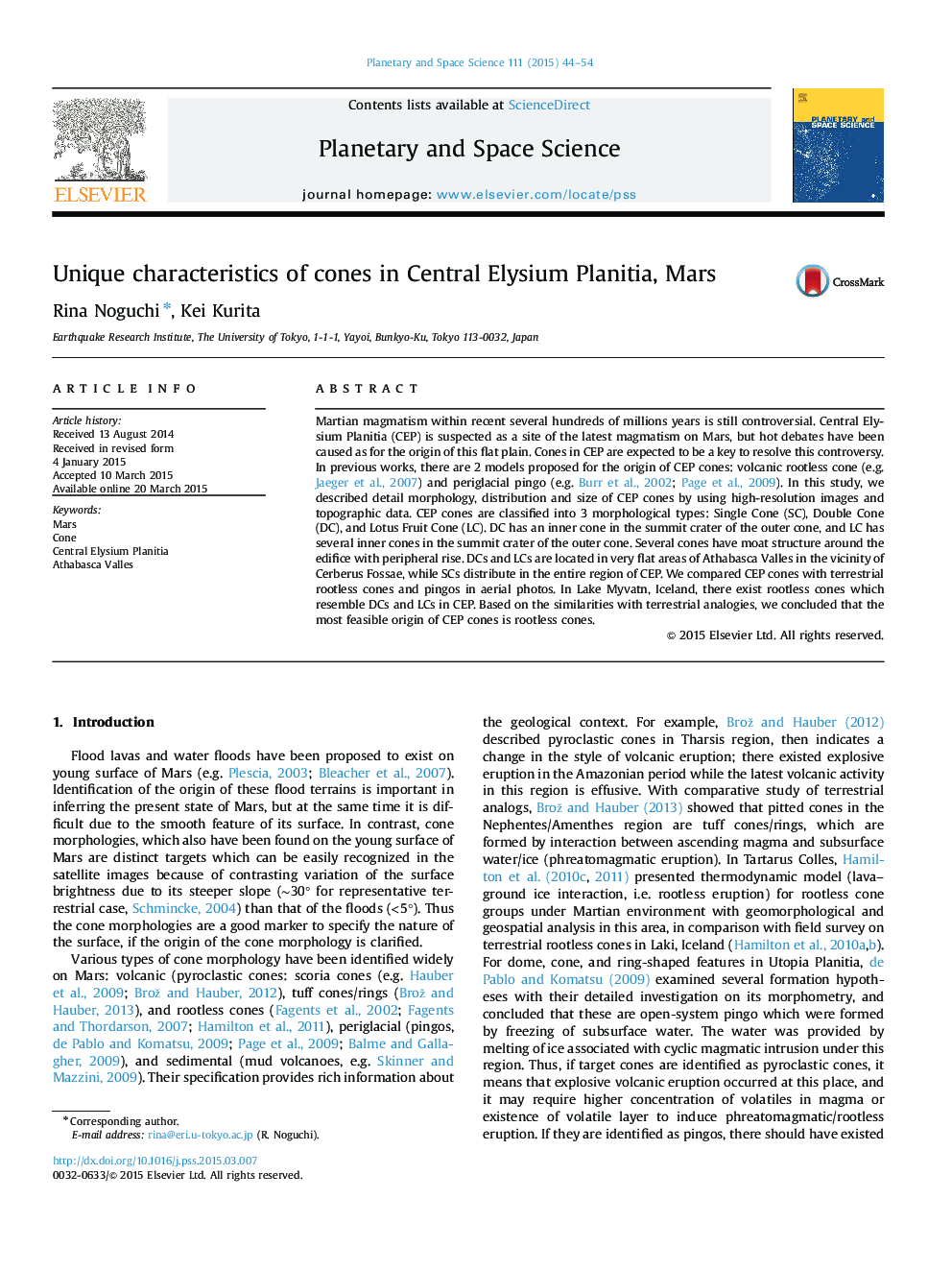| Article ID | Journal | Published Year | Pages | File Type |
|---|---|---|---|---|
| 1780984 | Planetary and Space Science | 2015 | 11 Pages |
Abstract
Martian magmatism within recent several hundreds of millions years is still controversial. Central Elysium Planitia (CEP) is suspected as a site of the latest magmatism on Mars, but hot debates have been caused as for the origin of this flat plain. Cones in CEP are expected to be a key to resolve this controversy. In previous works, there are 2 models proposed for the origin of CEP cones: volcanic rootless cone (e.g. Jaeger et al., 2007) and periglacial pingo (e.g. Burr et al., 2002; Page et al., 2009). In this study, we described detail morphology, distribution and size of CEP cones by using high-resolution images and topographic data. CEP cones are classified into 3 morphological types: Single Cone (SC), Double Cone (DC), and Lotus Fruit Cone (LC). DC has an inner cone in the summit crater of the outer cone, and LC has several inner cones in the summit crater of the outer cone. Several cones have moat structure around the edifice with peripheral rise. DCs and LCs are located in very flat areas of Athabasca Valles in the vicinity of Cerberus Fossae, while SCs distribute in the entire region of CEP. We compared CEP cones with terrestrial rootless cones and pingos in aerial photos. In Lake Myvatn, Iceland, there exist rootless cones which resemble DCs and LCs in CEP. Based on the similarities with terrestrial analogies, we concluded that the most feasible origin of CEP cones is rootless cones.
Related Topics
Physical Sciences and Engineering
Earth and Planetary Sciences
Geophysics
Authors
Rina Noguchi, Kei Kurita,
